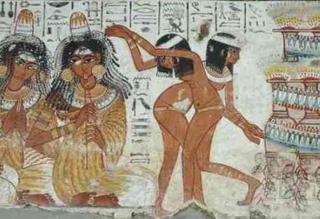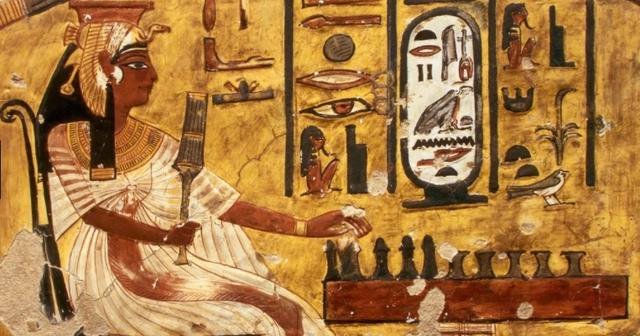A funerary feast in ancient Egypt
The funeral of an Egyptian, at least for one that lived around the year 2000 B.C. and that came from a wealthy family, would end with a final feast in which his family and friends would believe to eat with the deceased only present in spirit. However, they would only eat half of the food and drinks they had brought to the feast. The other half was laid inside the tomb.

Why put it there?
The representations of banquets guarantee the deceased the food in the hereafter
This idea ancient Egyptians had of the deceased bringing food to the next stage of life, after death, came from the origins of their own civilization. Different excavations have found recipients with grain, bread, tubers and frequently the front legs of different animals in tombs dating back to the pre-dynastic (pharaoh) period (3200-3065 B.C.). In 1939, the archeologist Walter Eméry found in Saqqara the tomb of a 60-year-old woman who’s after-life “menu” was composed of 16 different types of foods!
Why the food?
For ancient Egyptians, someone’s soul was made up of five essential parts of which the Ka (The immaterial part) was the vital cosmic energy that was bound to someone before they were born and departed the person after they died. During the funerary feast, and with the ritual of opening the mouth, you could make the Ka go back to the soul so that the deceased could use his or her organs in the after world.
Because of this, the food in the tomb had to be replaced every day, to feed the Ka. However, one could not replace food for eternity, so the alternative was to decorate the interior walls of one’s tomb with drawings of food and the final feast. This was the way the Ka could benefit from the magic of drawing and writing, represented eternally.

A mirror of one’s life
In the wall drawings, the deceased was usually represented in the middle, surrounded by all types of foods and animals. Previous to the era of Tutmosis I (1506 – 1494 B.C.) these drawing where merely of food and some of the processes of food elaboration and acquisition like hunts and fishing. As the centuries went buy, people with a higher economic standard started building enormous buildings for their own tombs and the drawings in the walls went from only food to showing how they lived in the mortal world.
The relation was made with how you where depicted living in the mortal world you could continue to live in the afterlife
During the reign of Akhenaton
You can refer to another post I have written about his reign but the idea is that during this pharaoh life religions where changed and the funerary feast tradition was banned. When he died the tradition was again allowed, but it wasn’t received as strong as it used to be.
Reminder: Please follow me, it would really help me in my journey through Steemit. Also leave a comment on what other things you would like to read about.
Congratulations! This post has been upvoted from the communal account, @minnowsupport, by tintiano from the Minnow Support Project. It's a witness project run by aggroed, ausbitbank, teamsteem, theprophet0, someguy123, neoxian, followbtcnews/crimsonclad, and netuoso. The goal is to help Steemit grow by supporting Minnows and creating a social network. Please find us in the Peace, Abundance, and Liberty Network (PALnet) Discord Channel. It's a completely public and open space to all members of the Steemit community who voluntarily choose to be there.
If you would like to delegate to the Minnow Support Project you can do so by clicking on the following links: 50SP, 100SP, 250SP, 500SP, 1000SP, 5000SP. Be sure to leave at least 50SP undelegated on your account.
This post has received a 0.16 % upvote from @drotto thanks to: @banjo.
Please keep making more ancient civilizations content, older the better :)
Congratulations @inaki.morton! You have completed some achievement on Steemit and have been rewarded with new badge(s) :
Click on any badge to view your own Board of Honor on SteemitBoard.
For more information about SteemitBoard, click here
If you no longer want to receive notifications, reply to this comment with the word
STOP